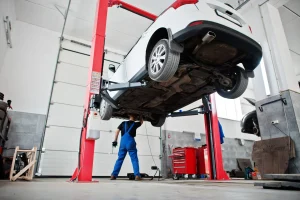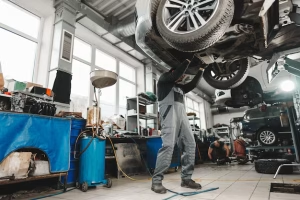If you own a car, there’s a high chance you’ve faced an unexpected breakdown at the most inconvenient time. Whether it’s a flat tire on a busy morning or headlights giving out during a nighttime drive, these issues can often lead to stress and hefty repair bills. But what if you could fix some of these common car problems yourself?
With the rise of DIY culture and easy access to online tutorials, more drivers are learning the art of car repair. These tricks can save you time, money, and even reduce your impact on the environment. This blog will walk you through the benefits of DIY car repair, essential tools to have on hand, and step-by-step guides to solving common breakdowns. By the time you’re done reading, you’ll feel more confident in tackling everyday car issues head-on.
Why DIY Car Repair is on the Rise
The DIY movement isn’t just about saving money (though it’s certainly a big reason). For many busy drivers and eco-conscious consumers, fixing your own car is empowering. It’s a chance to gain independence from expensive repair shops and unnecessary waste. Let’s take a closer look at why more people are turning their garages into makeshift workshops:
Time and Cost Savings
Car problems often seem to have the worst timing—like a dead battery when you’re already running late. Instead of waiting hours for roadside assistance or scheduling a costly repair, a quick fix at home can save you both time and money. For instance, replacing a headlight bulb can cost up to $100 at a shop, but doing it yourself might cost you $15 and a few minutes of your time.
Environmental Impact
DIY car repair isn’t just good for your wallet—it’s good for the planet too. Learning to replace parts like brake pads or filters instead of scrapping your car entirely reduces waste. Plus, routine maintenance, like changing oil on schedule, ensures your car runs efficiently, cutting down on emissions.
A Sense of Accomplishment
Ask any car enthusiast—it’s deeply satisfying to diagnose and fix your car with your own two hands. It connects you with your vehicle on a deeper level and turns a stressful problem into a rewarding experience.
Essential Tools Every DIY Mechanic Should Own
Before you jump into repairs, it’s important to gather a basic set of tools. Don’t worry—you don’t need a full mechanic’s shop to get started with DIY car repair. Here are some essentials:
- Jack and Jack Stands: For safe lifting of the car to access tires and undercarriage.
- Lug Wrench: Key for removing and tightening wheel nuts.
- Socket Set: A versatile tool for bolts and screws under the hood.
- Screwdriver Set: Ensure you have both flathead and Phillips-headed screwdrivers.
- Oil Filter Wrench: A specialized tool that makes oil changes a breeze.
- Multimeter: To test electrical connections and battery life.
- Gloves and Safety Glasses: Always prioritize safety while working on your car.
- Work Light: A bright, focused light ensures you can see what you’re doing even in dim spaces.
Investing in these basic tools will pay off quickly through the repairs and troubleshooting you can handle yourself.
Step-by-Step Guides to Fixing Common Car Breakdowns
Now that you have your tools ready, it’s time to get your hands dirty. Below are step-by-step instructions for five common car issues:
1. Changing a Flat Tire
You’ll Need: Jack, lug wrench, spare tire
- Park your car on a stable, flat surface, and engage the parking brake.
- Use the lug wrench to slightly loosen the lug nuts.
- Position the jack under the car frame near the flat tire and lift until the wheel is off the ground.
- Remove the lug nuts and the flat tire.
- Mount the spare tire, tighten the lug nuts, and lower the car. Check the tire’s pressure before driving away.
2. Replacing Worn Brake Pads
You’ll Need: Jack, lug wrench, socket set, new brake pads
- Loosen the lug nuts on the wheel, lift the car, and remove the wheel.
- Locate the brake caliper and remove the bolts holding it in place.
- Slide out the old brake pads and install the new ones.
- Reattach the caliper and wheel, and then test the brakes to ensure proper function.
3. Jump-Starting a Dead Battery
You’ll Need: Jumper cables, a second vehicle
- Position the cars close together but not touching.
- Connect one end of the red jumper cable to the dead battery’s positive terminal and the other end to the positive terminal of the charged battery.
- Connect one end of the black cable to the charged battery’s negative terminal and the other end to a metal, unpainted surface on the car with the dead battery.
- Start the donor car, then the stalled car. Remove cables in reverse order and allow the revived car to run for 10-15 minutes.
4. Changing Engine Oil and Filters
You’ll Need: Oil filter wrench, funnel, oil pan, fresh oil, new filter
- Warm up your engine slightly, then turn it off and locate the drain plug under the car.
- Place the oil pan beneath the plug, remove the plug, and drain the old oil.
- Use the oil filter wrench to remove the old filter and replace it with a new one.
- Reinsert the drain plug and refill the engine with the recommended type and amount of oil.
5. Replacing Headlights and Taillights
You’ll Need: New bulb, gloves or microfibre cloth
- Open the hood or trunk to access the back of the headlight or taillight assembly.
- Disconnect the wiring harness, turn the old bulb counterclockwise, and remove it.
- Using gloves (to avoid oil marks), install the new bulb and reconnect the harness.
Safety Tips for DIY Car Repair
Working on your car can be exhilarating, but safety should always come first. Here are essential tips to keep in mind:
- Work in a Well-Ventilated Area (especially when dealing with fluids or jump-starting).
- Use Jack Stands to ensure the car is securely lifted.
- Wear Protective Gear to protect your hands and eyes.
- Follow Vehicle Manuals for guidance specific to your car model.
- Dispose of Fluids Properly by taking them to a recycling center.
Take Control of Your Car Repairs
DIY car repair isn’t just about saving money—it’s about gaining control, reducing stress, and positively impacting the environment. With the right tools, techniques, and a bit of practice, even the busiest drivers can become confident in their ability to handle common car breakdowns.
Now it’s your turn! Try one of these fixes on your own car, and share your success story with us. Whether you’ve mastered changing a flat tire or completed your first oil change, we’d love to hear about it.
Want to stay updated on more DIY car tips? Subscribe to our newsletter, and we’ll keep you informed on the latest tricks for maintaining your ride like a pro.


